- Home
- Tom Clancy
SSN Page 3
SSN Read online
Page 3
That stopped Mack. “I thought 402 was sunk by the submarine escorting Nimitz,” he said.
“So did naval intelligence,” the sonar supervisor replied. “I guess they got their numbers mixed up. Wouldn’t be the first time.”
The captain called to the OOD, “Begin retrieving the TB-23. I don’t want to get tangled up in case we have a fight on our hands.” The towed-array sonar was valuable for quietly listening to passive sonar contacts, but Mack, like many submarine captains, preferred to retrieve it before engaging in close combat with an enemy submarine.
Mack left the sonar room and went back to the conn to see how the fire-control solution was coming.
“Conn, sonar, our contact, Master 1, just stopped his shaft.”
Seven more minutes passed, Cheyenne’s sonar operators carefully monitoring the tonals from the Chinese submarine’s reactor coolant pumps. These had to be run constantly in order to avoid destroying the reactor, one of the few drawbacks of a nuclear-powered submarine. A conventional, or non-nuclear, submarine could stop dead in the water, running entirely on her battery power, and be completely silent. A nuclear submarine, however, such as Cheyenne or Han number 402, had to constantly pump reactor coolant in order to keep the reactor critical and prevent its overheating. That difference meant that it sometimes could be easier to hunt an SSN than a regular diesel boat — especially when the SSN was an old, 1970s-vintage Han with reactor plant problems.
The silence ended when the sonar supervisor called, “Conn, sonar, single active pulse from Master 1.” Moments later there was a second sonar pulse.
Mack ordered the chief of the watch to “Man battle stations torpedo,” then took the conn from the officer of the deck.
With battle stations manned, the executive officer, in his role as the fire control coordinator, reported to the captain, “Master 1 is now bearing 169, BSY-1 range is 22,000 yards. He was not in a convergence zone.”
Aboard Han 402, the Chinese commander felt as if he had little choice but to give his position away. His sonar had acquired only intermittent contact on the American submarine maneuvering in this area, and he needed to locate it in order to accomplish his mission: sink the submarine and then continue on against American merchant ships. He knew an American submarine was out there, but didn’t know where, and didn’t know it was Cheyenne. Unfortunately for him and his crew, however, he had thought that he was much closer to the Americans than his active sonar told him he was. 22,000 yards was out of torpedo range for his submarine, but not for Cheyenne’s Mk 48s.
Those two active “pings” were a calculated risk on the Chinese captain’s part. He knew his submarine was as noisy as a bull in a china shop and he suspected the Americans had been tracking him. Once he’d figured out that the American submarine had passed him he knew they could not be far off. If he waited too long, he would miss his chance to attack.
Aboard Cheyenne, Mack was trying to outguess the Chinese captain. He knew that Chinese submarines were notorious for having very poor sonar outfits, but he didn’t think they were bad enough that the captain of number 402 would have no choice but to use his active sonar, giving away his own exact location. No, Mack thought. This does make sense. If the Chinese captain knew we were tracking him, he probably had figured that we knew his location, so all he was really doing was leveling the playing field-giving away information we already had in order to learn our location as well.
What this amounted to was that the Chinese submarine had gone active on the American submarine and both submarines now had an accurate firing solution. Mack didn’t expect the Chinese captain to let this opportunity slip away. The Han was currently outside its own torpedo range, but that could change rapidly.
“Conn, sonar, the Han just started up again. It’s making turns for twenty-five knots, sounds like she’s really straining. They are closing quickly.”
Captain Mackey reversed course to minimize the range closure while he ordered tubes one and two made ready in all respects.
“Torpedo room, fire control, make tubes one and two ready in all respects and open the outer doors.”
When the outer doors were open, Mack turned back toward the Han and increased speed to full. Both submarines were headed straight for one another in an underwater game of chicken that could potentially ignite a third world war.
“Conn, sonar, we have a torpedo in the water! Type SET-53, bearing 163. It’s active, Captain.”
“Range to Master 1 is 21,000 yards,” reported the fire control coordinator.
Mack looked around his control room. There was a look of horror in the eyes of the young sailors who had not yet been in the Navy for six months.
“All stop,” he ordered.
“All stop, aye, sir,” the helmsman repeated. Seconds later he added, “Maneuvering answers all stop.”
The normal procedure for countering a torpedo was turn and run, flank speed, in the opposite direction. This was not, however, a normal situation.
The U.S. intelligence community had managed to secretly buy three of the Chinese type SET-53 homing torpedoes from the Russians in a not-so-friendly transfer of technology. From their various tests, they had determined that the maximum range of the SET-53 was five nautical miles, or 10,000 yards. Even building in a large margin of error by doubling that range to ten nautical miles, or about 20,000 yards, Mack knew that there was simply no way that the Chinese torpedo could hit Cheyenne.
It did, however, make Captain Mackey furious, and not just because this was an act of war against the United States by a Chinese submarine. More than that, this was an aggressive action against him, his submarine, and his crew.
Cheyenne was not in any immediate danger — not yet, at least. Just in case, however, the captain calmly ordered, “Rig ship for depth charge.”
The Chinese captain had put his submarine in a very bad position. The Chinese leaders, wanting to demonstrate their power to the Americans, had given Han 402 orders to attack American submarines and surface ships operating in the area. The 402’s captain was following his orders faithfully… but he didn’t believe those orders included suicide. And he knew all too well that attacking a Los Angeles class submarine was tantamount to suicide. If he could manage to get in close enough to attack Cheyenne, he would do so. If not, he would follow his orders and launch at whatever range he felt he could without getting himself killed, and then he would dive deep and hunt for American merchant ships.
When the active “pings” revealed Cheyenne’s location, the Chinese captain realized that he had given away their location much too far away to effectively attack the Americans. With their own location revealed, closing with Cheyenne would put the Han at serious risk, which meant that his only real choice was either to simply turn and run or to first shoot at the Americans and then turn and run. The first option appealed to him the most, but the second option was what his orders demanded.
The Han captain gave the command to release a single torpedo and then began turning to his right. His only plan was to make a turn to the east and get away from the now-angry American submarine.
Mack thought about that torpedo in the water and what it meant. The Han had fired upon him without provocation, which meant that China had decided to escalate. They would be starting hostilities at any moment, and all submarines would by now have been tasked by the Chinese navy to sink any American warships, merchant ships, or submarines as they exited their home ports.
All around the world, wherever Chinese vessels came in contact with American ships, there would be blood-shed. Some of them would get lucky. Some would win, and some would lose. But this particular Chinese captain had gotten unlucky when he decided to attack Cheyenne rather than a defenseless merchant vessel.
And it was too late to change his mind.
Mack immediately saw what the Han was doing. It was turning and running — in the direction of San Diego, which could only mean one thing. China was at war with the United States.
“Conn, sonar, the Chin
ese torpedo just settled dead in the water,” the sonar supervisor reported. “Based on run time, it didn’t even make it 6,000 yards.”
Mack nodded. The Chinese had had their turn. Now it was Cheyenne’s.
The Los Angeles class attack submarine began to pick up speed rapidly, rushing to get behind the Han. The Chinese submarine was running from them in an attempt to escape the American submarine and return to a safe haven, hiding somewhere off the West Coast, but Cheyenne wasn’t about to allow that.
The Han’s top speed was twenty-five knots; Cheyenne was doing thirty-one knots, and the range to Master 1 closed rapidly. Both commanding officers knew it would only be a matter of time before the Americans were within firing range.
Aboard the Han, the Chinese captain’s options were limited once again. He could continue to run, prolonging things for a short while longer, or he could turn and fight.
His orders were clear, and so was his choice. At his command, his submarine came around in another slow turn and bore down on Cheyenne.
It was a noble gesture, but a futile one. The Han captain was racing to get within torpedo range, knowing that the effective range of the American Mk 48 ADCAP was more than double that of his Chinese SET-53.
“Conn, sonar, two torpedoes in the water, more SET- 53s, bearing 165.”
The fire control coordinator reported the range to Master 1 as 18,000 yards.
Mack wasn’t worried. Clearly, the Chinese had done this out of desperation. They wanted to go down fighting, and their only hope was to get lucky — and a torpedo in the water was a chance to get lucky; a torpedo unlaunched was nothing.
Cheyenne had closed to within striking range, but Mack didn’t give the orders to shoot yet. There were still two chances for the Chinese to get lucky, if those SET-53s really had a range of 20,000 yards. Captain Mackey once again gave the orders to prepare for a possible torpedo hit, and also to take evasive action by launching two ADC (Acoustic Device Countermeasure) Mk 2 decoys.
The decoys, which were launched out of what were in effect mini-torpedo tubes, accomplished exactly what they were intended to do and decoyed the torpedoes in a direction other than that of Cheyenne. The Chinese torpedoes ran out the length of their course without hitting anything solid. Their momentum spent, they settled to the ocean floor, taking Han 402’s hopes with them.
Though Mack had trained nearly his entire career for firing on an enemy submarine, he had never really expected it to happen. But Mack, like the others aboard Cheyenne, was a professional. He was calm as he gave the command, “Firing point procedures, Master 1, tubes one and two.”
A BSY-1 operator reported the relevant target data to the captain.
“Match sonar bearings and shoot, tubes one and two,” Mack said, his voice cool and steady.
“Match sonar bearings and shoot, tubes one and two, aye,” the fire control coordinator repeated the command.
The Mk 48s were launched from the weapons control console and were ejected from their tubes. Their Otto fuel engines came to life, powering their pump jets.
“Tubes one and two fired electrically,” said the combat systems officer at the weapons control console.
As soon as the torpedoes entered the water, the Chinese submarine began to turn. Mack guessed that they were going to try a ninety-degree turn away from the Mk 48s, but the seeker heads on the ADCAPs were doing what they had been designed to do: hunt down an enemy submarine. They stayed with the Han as it twisted and turned.
“Both torpedoes have acquired Master 1,” reported the combat systems officer. Both Mk 48s had found the enemy submarine with their own sonars and no longer needed to be guided by Cheyenne’s fire-control system via their guidance wires.
“Cut the wires, shut the outer doors, and reload tubes one and two,” ordered Captain Mackey.
“Conn, sonar, two explosions, bearing 162.”
A cheer erupted in the control room, but Captain Bartholomew Mackey did not join in. The sailors were celebrating the fact that Cheyenne had just achieved her first blood, but Mack knew that more than that had just happened.
War with mainland China was now a fact of life.
A short time later, Mack secured from battle stations and ordered Cheyenne to proceed to periscope depth. Using SSIXS (Submarine Satellite Information Exchange System), Mack communicated their actions to the higher-ups in the Department of Defense and the Navy. As Mack had suspected, message traffic indicated that their encounter had not been an isolated incident and Cheyenne soon learned that what seemed like an all-out war had been started by China in an attempt to assert its position in the new world order.
Cheyenne’s orders were again confirmed and she was to remain on course, sprinting and drifting until arriving at Pearl Harbor so that she could resupply and join other American units in the South China Sea. There was one important change in her orders, however: she was now allowed to attack any Chinese naval vessel she encountered so long as her trip to Pearl would not be overly delayed.
* * *
The remainder of the trip to Pearl was a tense one. Every moment that passed increased the likelihood that they would once again face combat. Running at four hundred feet toward the submarine safety lanes southwest of the Big Island of Hawaii, the OOD brought the submarine shallow to copy over the floating wire any news that might have occurred since their last venture toward the surface. The news was not good.
Two Spruance class destroyers, the USS Fletcher (DD 992) and the USS John Young (DD 973), were operating in conjunction with the Coast Guard cutter Midgett (WHEC 726). One of the SH-60 Seahawks from Fletcher had dropped a line of sonobuoys about 150 miles south of Honolulu and detected a possible sonar contact. All vessels had been told of the friendly submarine traffic in the area, but the contact the Fletcher’s Seahawk detected did not match any of the sonar profiles of the submarines expected to be operating nearby.
Another Seahawk from John Young was en route to the area. Its orders were to assist in determining what type of contact the sonobouys were tracking.
Cheyenne went to periscope depth. Word came to them over the periscope communications antenna, on the “Navy Red” encrypted circuit from one of the helicopters, that there was a possible enemy submarine operating in the area, which turned out to be forty-two nautical miles north of Cheyenne’s current location. The message also indicated that Cheyenne’s assistance would be greatly appreciated. Mack acknowledged the pilot’s request, and then ordered Cheyenne to return to operational depth and proceed toward the reported datum.
Forty-seven minutes later Cheyenne’s towed-array sonar detected the sonar contact. They were still out of range and could not tell much about the contact. They knew only that it might be a submarine, and that, if it was a submarine, it was attempting to be as quiet as possible. The sonar supervisor designated this new contact as Cheyenne’s Master 2.
On the surface, the two U.S. destroyers and the Coast Guard cutter were hunting the sonar contact. The surface ships were attempting to keep their distance from the contact, wary of a possible torpedo attack. The Seahawks did not have to worry about that, and at 1340, moments after the surface ships had confirmed that the contact was indeed another Chinese nuclear submarine, Cheyenne heard the sounds of two Mk 50 torpedoes entering the water.
“Conn, sonar, torpedoes in the water… Mk 50s, bearing 017. The Seahawks just dropped weapons on the submarine contact, Master 2.”
A short time later the small helicopter torpedoes went active. Cheyenne heard two noisemaker decoys being launched, followed by the loud cavitation of the Chinese submarine as it attempted to outrun the Mk 50s — to no avail.
“Conn, sonar, two explosions, bearing 023.”
“Radio, Captain,” Mack said. “Send congrats to the helo pilots over Navy Red; they just sank themselves an enemy submarine!”
Cheyenne’s crew was justifiably jubilant at having witnessed the destruction of a second Chinese submarine. Perhaps it had not been as exciting as their initial taste of
combat, but it had boosted their confidence in their naval brethren hundreds of feet above them.
More than that, though, they were buoyed by the fact that every aspect of their first mission had gone off without a hitch. Mack ordered Cheyenne to proceed to Pearl. Once there, they would complete their mini-refit and prepare Cheyenne for her next operation: her transit to the home waters off China — the South China Sea.
2. South China Sea Station
Captain Mackey looked around the small wardroom, meeting the gaze of each of the officers assembled before him. “The price of success,” he said. “The Navy was so pleased with our operations while en route to Pearl that they decided to send us directly into harm’s way. Cheyenne has been ordered to rendezvous with the USS Independence (CV-62), which will be heading in the direction of the recently occupied Spratly Islands. Independence is currently steaming in the Indian Ocean. We are to meet up with her one hundred miles northwest of Natuna Island. Upon crossing the Pacific Ocean we will chop (change operational commander) to the Seventh Fleet.”
Mack kept his voice and his gaze steady. Such transfers were common between fleets, but this one carried the connotation of an increase in risk. The Third Fleet was remaining on station closer to home; the Seventh was on the front lines of this new war.
“Naval intelligence reports that there are large numbers of enemy warships operating in the area,” Mack went on. “We will, without a doubt, come into contact with many of these. Our first priority, however, remains meeting up with Independence. We will take this dangerous mission one step at a time. Remember, they have the home-court advantage.”
He looked around the wardroom one last time. “We’ll depart as soon as our refit is complete.”
If only that were true, Mack thought. But the truth was, they would be leaving before they were completely outfitted. As was always the case during peacetime, materiel was never ordered in large enough quantities to satisfy the demands of wartime operations. There were too many ships steaming into Pearl for supplies, and not enough weapons and ammunition to go around.

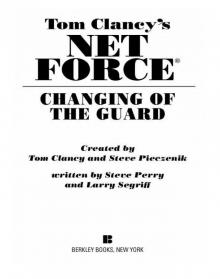 Changing of the Guard
Changing of the Guard Clear and Present Danger
Clear and Present Danger Hounds of Rome
Hounds of Rome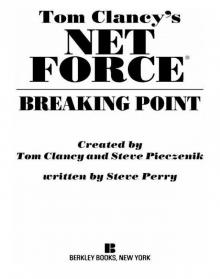 Breaking Point
Breaking Point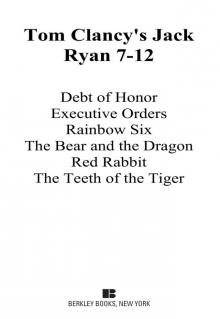 Tom Clancy's Jack Ryan Books 7-12
Tom Clancy's Jack Ryan Books 7-12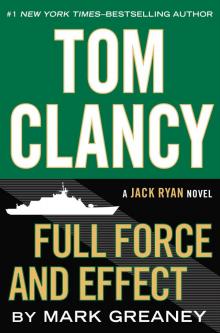 Full Force and Effect
Full Force and Effect The Archimedes Effect
The Archimedes Effect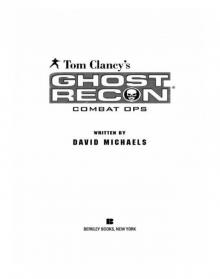 Combat Ops
Combat Ops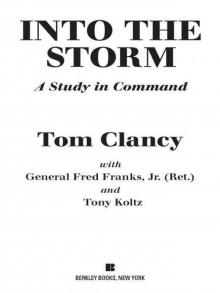 Into the Storm: On the Ground in Iraq
Into the Storm: On the Ground in Iraq Under Fire
Under Fire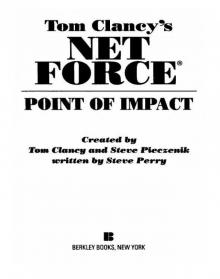 Point of Impact
Point of Impact Red Rabbit
Red Rabbit Rainbow Six
Rainbow Six The Hunt for Red October
The Hunt for Red October The Teeth of the Tiger
The Teeth of the Tiger Conviction (2009)
Conviction (2009)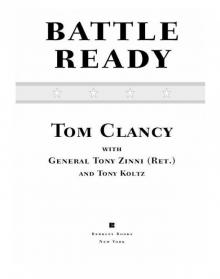 Battle Ready
Battle Ready Patriot Games
Patriot Games The Sum of All Fears
The Sum of All Fears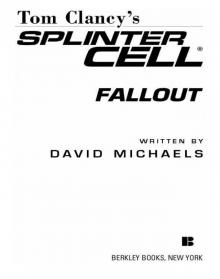 Fallout (2007)
Fallout (2007) Red Storm Rising
Red Storm Rising The Cardinal of the Kremlin
The Cardinal of the Kremlin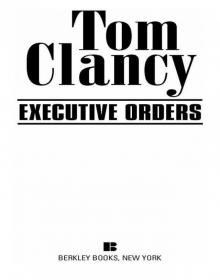 Executive Orders
Executive Orders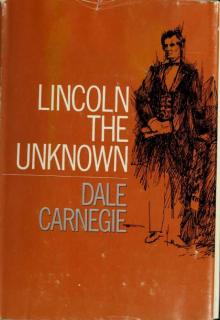 Lincoln, the unknown
Lincoln, the unknown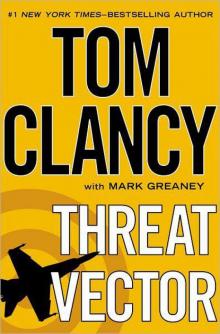 Threat Vector
Threat Vector The Hunted
The Hunted Shadow Warriors: Inside the Special Forces
Shadow Warriors: Inside the Special Forces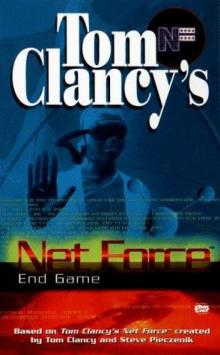 End Game
End Game Special Forces: A Guided Tour of U.S. Army Special Forces
Special Forces: A Guided Tour of U.S. Army Special Forces Locked On
Locked On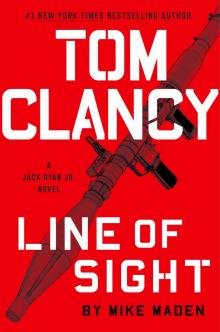 Line of Sight
Line of Sight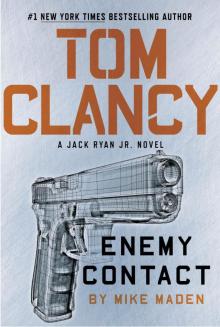 Tom Clancy Enemy Contact - Mike Maden
Tom Clancy Enemy Contact - Mike Maden Fighter Wing: A Guided Tour of an Air Force Combat Wing
Fighter Wing: A Guided Tour of an Air Force Combat Wing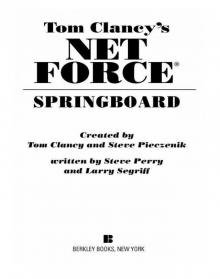 Springboard
Springboard Line of Sight - Mike Maden
Line of Sight - Mike Maden EndWar
EndWar Dead or Alive
Dead or Alive Tom Clancy Support and Defend
Tom Clancy Support and Defend Checkmate
Checkmate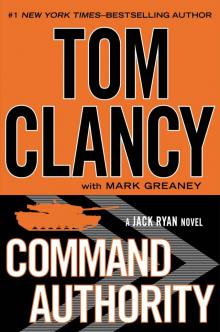 Command Authority
Command Authority Carrier: A Guided Tour of an Aircraft Carrier
Carrier: A Guided Tour of an Aircraft Carrier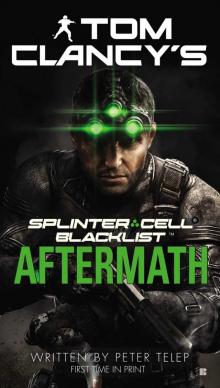 Blacklist Aftermath
Blacklist Aftermath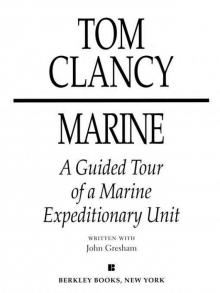 Marine: A Guided Tour of a Marine Expeditionary Unit
Marine: A Guided Tour of a Marine Expeditionary Unit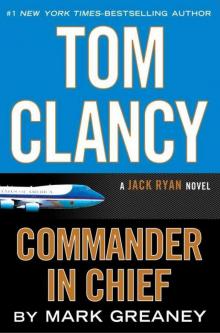 Commander-In-Chief
Commander-In-Chief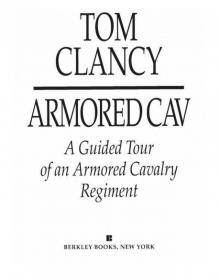 Armored Cav: A Guided Tour of an Armored Cavalry Regiment
Armored Cav: A Guided Tour of an Armored Cavalry Regiment Tom Clancy's Jack Ryan Books 1-6
Tom Clancy's Jack Ryan Books 1-6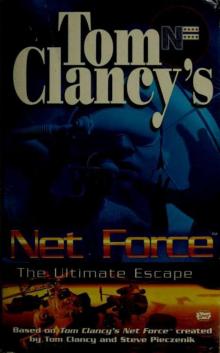 The Ultimate Escape
The Ultimate Escape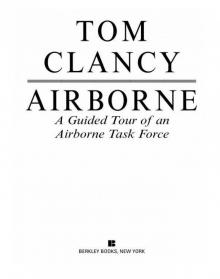 Airborne: A Guided Tour of an Airborne Task Force
Airborne: A Guided Tour of an Airborne Task Force Debt of Honor
Debt of Honor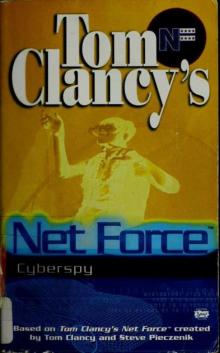 Cyberspy
Cyberspy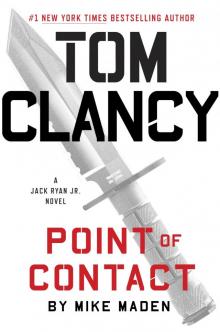 Point of Contact
Point of Contact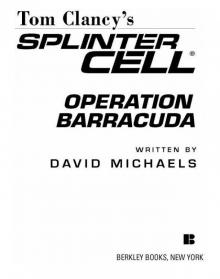 Operation Barracuda (2005)
Operation Barracuda (2005)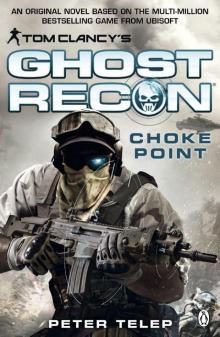 Choke Point
Choke Point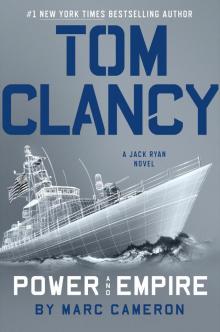 Power and Empire
Power and Empire Every Man a Tiger: The Gulf War Air Campaign
Every Man a Tiger: The Gulf War Air Campaign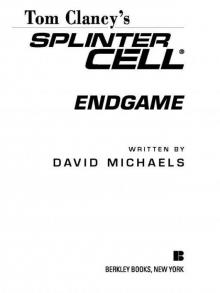 Endgame (1998)
Endgame (1998) EndWar: The Missing
EndWar: The Missing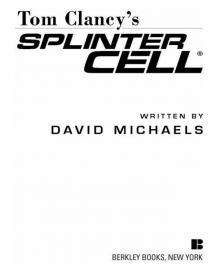 Splinter Cell (2004)
Splinter Cell (2004)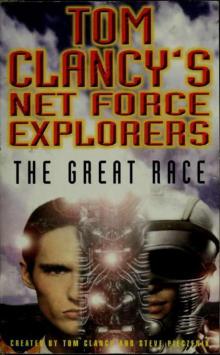 The Great Race
The Great Race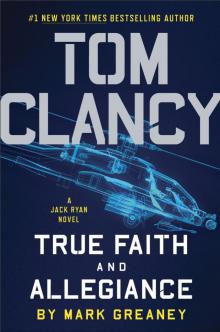 True Faith and Allegiance
True Faith and Allegiance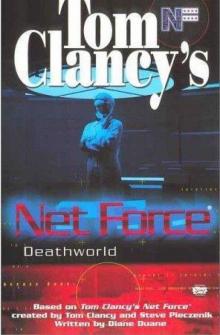 Deathworld
Deathworld Ghost Recon (2008)
Ghost Recon (2008)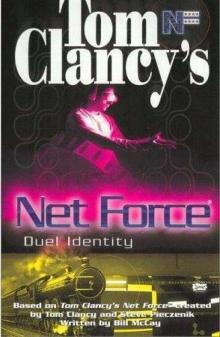 Duel Identity
Duel Identity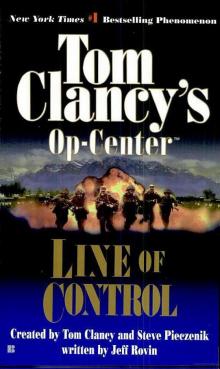 Line of Control o-8
Line of Control o-8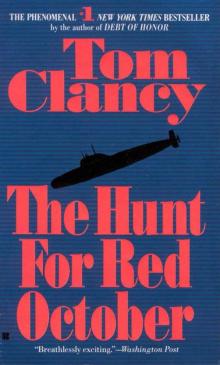 The Hunt for Red October jr-3
The Hunt for Red October jr-3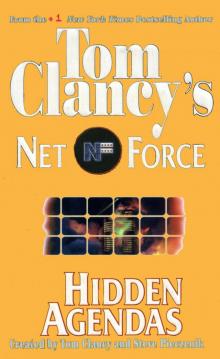 Hidden Agendas nf-2
Hidden Agendas nf-2 Acts of War oc-4
Acts of War oc-4 Ruthless.Com pp-2
Ruthless.Com pp-2 Night Moves
Night Moves The Hounds of Rome - Mystery of a Fugitive Priest
The Hounds of Rome - Mystery of a Fugitive Priest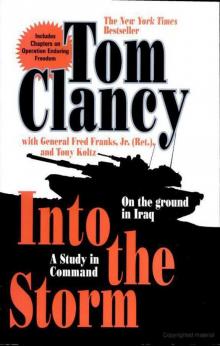 Into the Storm: On the Ground in Iraq sic-1
Into the Storm: On the Ground in Iraq sic-1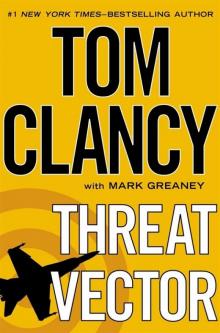 Threat Vector jrj-4
Threat Vector jrj-4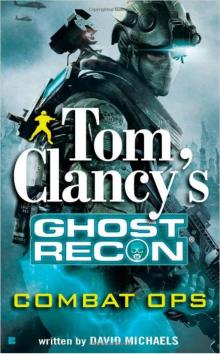 Combat Ops gr-2
Combat Ops gr-2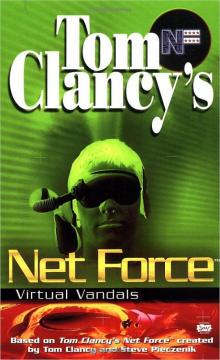 Virtual Vandals nfe-1
Virtual Vandals nfe-1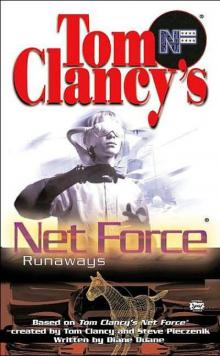 Runaways nfe-16
Runaways nfe-16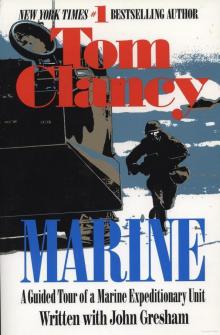 Marine: A Guided Tour of a Marine Expeditionary Unit tcml-4
Marine: A Guided Tour of a Marine Expeditionary Unit tcml-4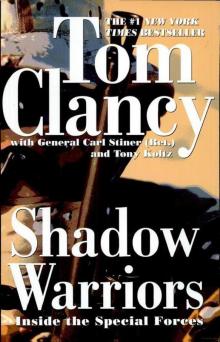 Shadow Warriors: Inside the Special Forces sic-3
Shadow Warriors: Inside the Special Forces sic-3 Jack Ryan Books 1-6
Jack Ryan Books 1-6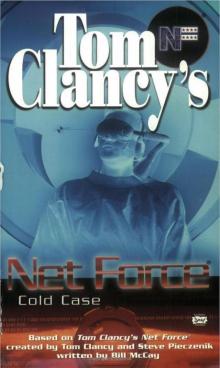 Cold Case nfe-15
Cold Case nfe-15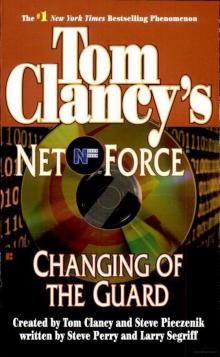 Changing of the Guard nf-8
Changing of the Guard nf-8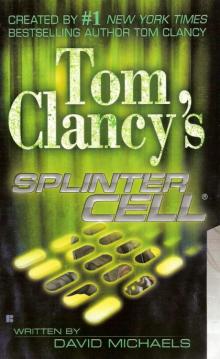 Splinter Cell sc-1
Splinter Cell sc-1 Battle Ready sic-4
Battle Ready sic-4 The Bear and the Dragon jrao-11
The Bear and the Dragon jrao-11 Fighter Wing: A Guided Tour of an Air Force Combat Wing tcml-3
Fighter Wing: A Guided Tour of an Air Force Combat Wing tcml-3 Patriot Games jr-1
Patriot Games jr-1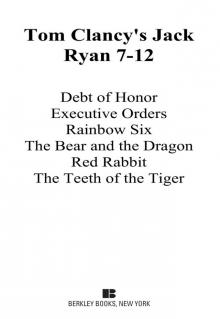 Jack Ryan Books 7-12
Jack Ryan Books 7-12 Mission of Honor o-9
Mission of Honor o-9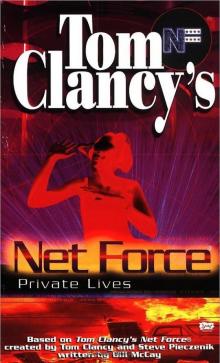 Private Lives nfe-9
Private Lives nfe-9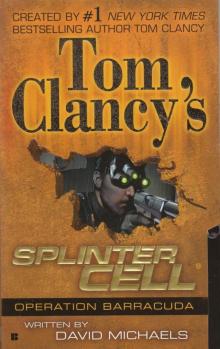 Operation Barracuda sc-2
Operation Barracuda sc-2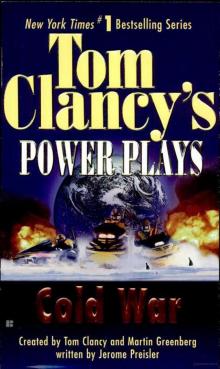 Cold War pp-5
Cold War pp-5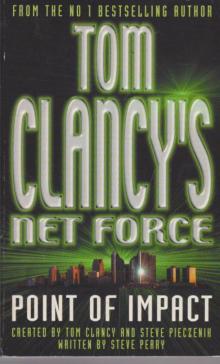 Point of Impact nf-5
Point of Impact nf-5 Red Rabbit jr-9
Red Rabbit jr-9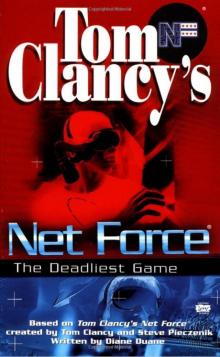 The Deadliest Game nfe-2
The Deadliest Game nfe-2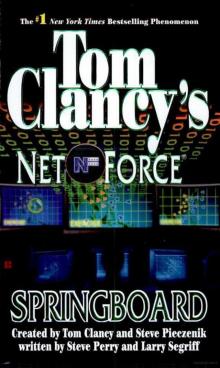 Springboard nf-9
Springboard nf-9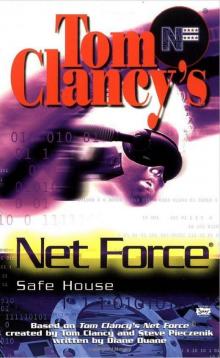 Safe House nfe-10
Safe House nfe-10 EndWar e-1
EndWar e-1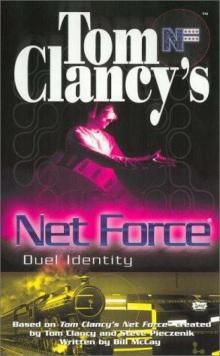 Duel Identity nfe-12
Duel Identity nfe-12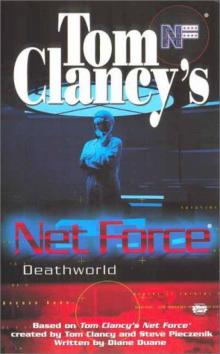 Deathworld nfe-13
Deathworld nfe-13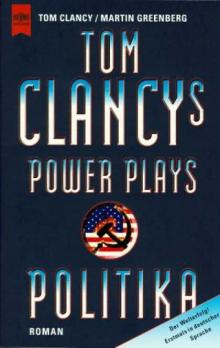 Politika pp-1
Politika pp-1 Rainbow Six jr-9
Rainbow Six jr-9 Tom Clancy's Power Plays 1 - 4
Tom Clancy's Power Plays 1 - 4 Endgame sc-6
Endgame sc-6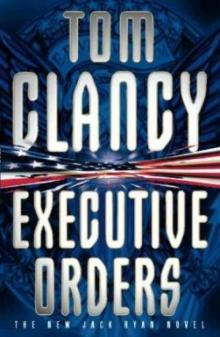 Executive Orders jr-7
Executive Orders jr-7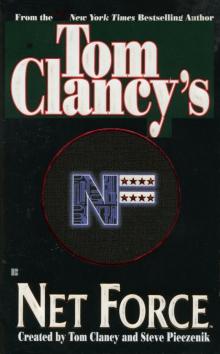 Net Force nf-1
Net Force nf-1 Call to Treason o-11
Call to Treason o-11 Locked On jrj-3
Locked On jrj-3 Against All Enemies
Against All Enemies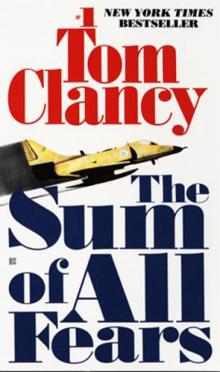 The Sum of All Fears jr-7
The Sum of All Fears jr-7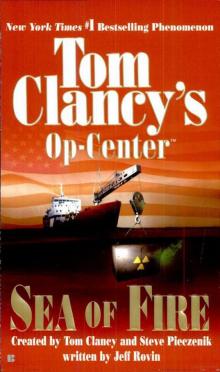 Sea of Fire o-10
Sea of Fire o-10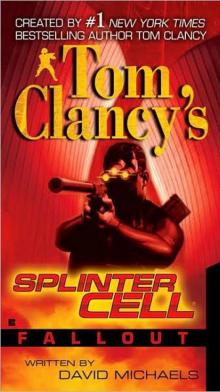 Fallout sc-4
Fallout sc-4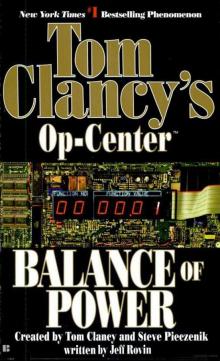 Balance of Power o-5
Balance of Power o-5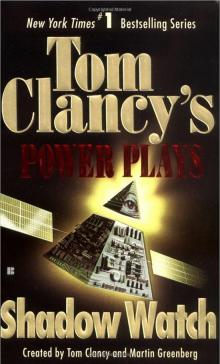 Shadow Watch pp-3
Shadow Watch pp-3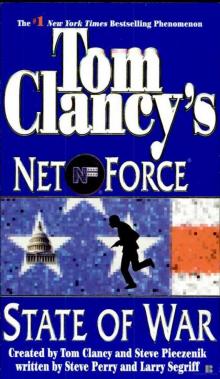 State of War nf-7
State of War nf-7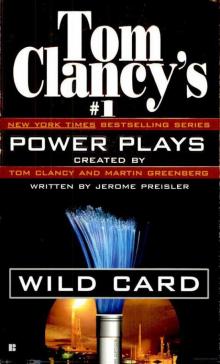 Wild Card pp-8
Wild Card pp-8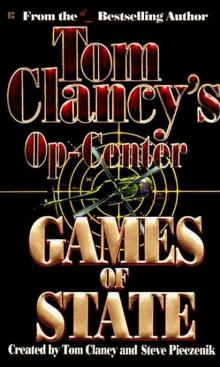 Games of State o-3
Games of State o-3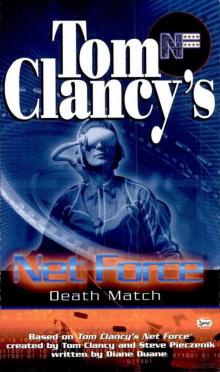 Death Match nfe-18
Death Match nfe-18 Against All Enemies mm-1
Against All Enemies mm-1 Every Man a Tiger: The Gulf War Air Campaign sic-2
Every Man a Tiger: The Gulf War Air Campaign sic-2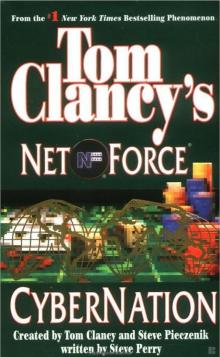 Cybernation nf-6
Cybernation nf-6 Support and Defend
Support and Defend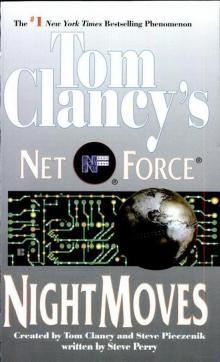 Night Moves nf-3
Night Moves nf-3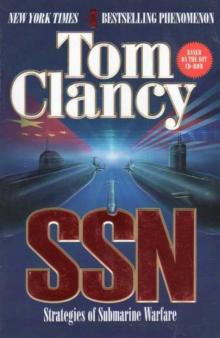 SSN
SSN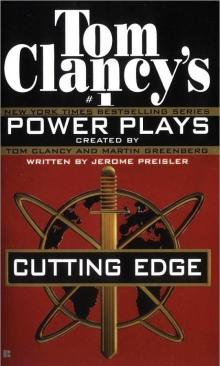 Cutting Edge pp-6
Cutting Edge pp-6 The Cardinal of the Kremlin jrao-5
The Cardinal of the Kremlin jrao-5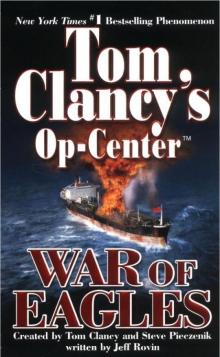 War of Eagles o-12
War of Eagles o-12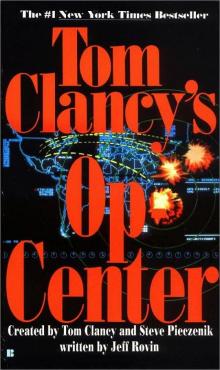 Op-Center o-1
Op-Center o-1 Mirror Image o-2
Mirror Image o-2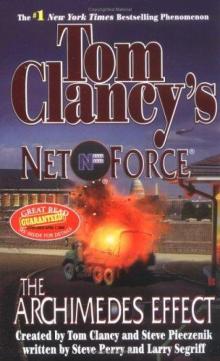 The Archimedes Effect nf-10
The Archimedes Effect nf-10 Teeth of the Tiger jrj-1
Teeth of the Tiger jrj-1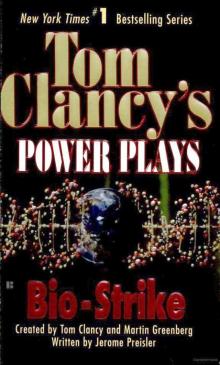 Bio-Strike pp-4
Bio-Strike pp-4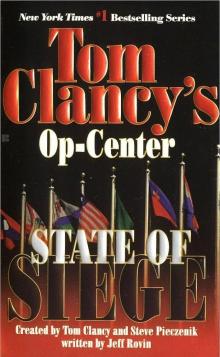 State of Siege o-6
State of Siege o-6 Debt of Honor jr-6
Debt of Honor jr-6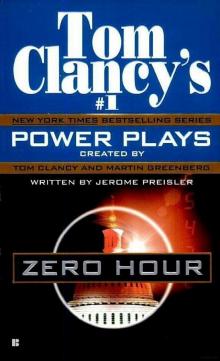 Zero Hour pp-7
Zero Hour pp-7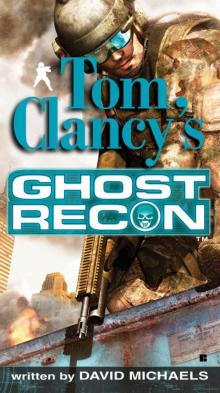 Ghost Recon gr-1
Ghost Recon gr-1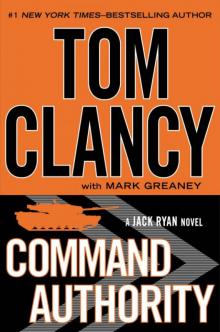 Command Authority jr-10
Command Authority jr-10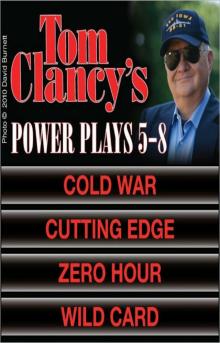 Tom Clancy's Power Plays 5 - 8
Tom Clancy's Power Plays 5 - 8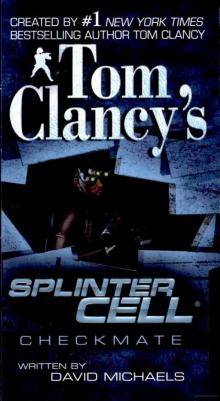 Checkmate sc-3
Checkmate sc-3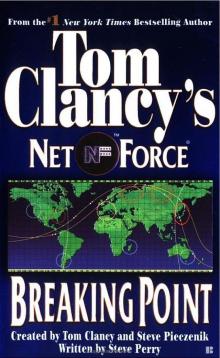 Breaking Point nf-4
Breaking Point nf-4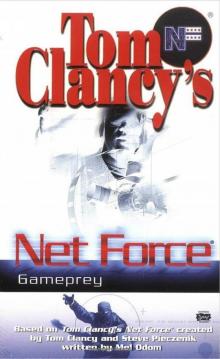 Gameprey nfe-11
Gameprey nfe-11 The Hunted e-2
The Hunted e-2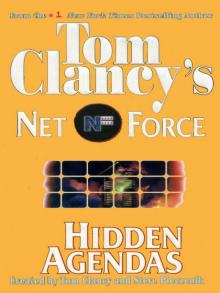 Hidden Agendas
Hidden Agendas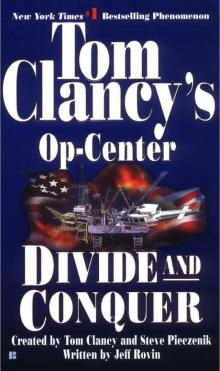 Divide and Conquer o-7
Divide and Conquer o-7